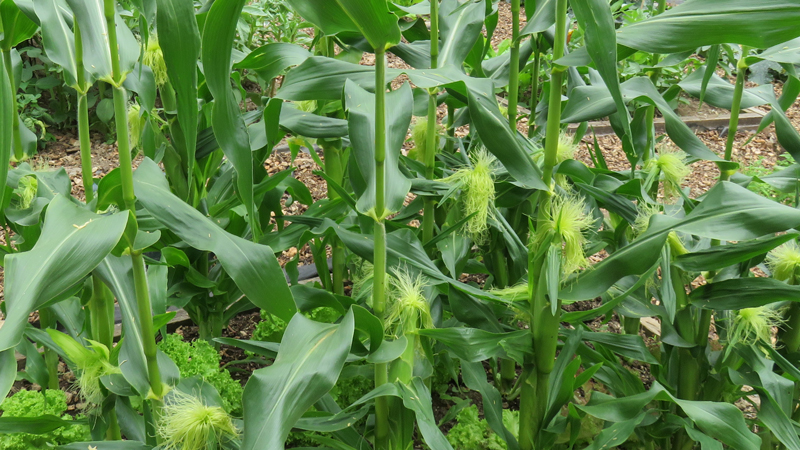We’ve all been there. You’ve waited weeks for your sweetcorn cobs to get nice and big, you’ve watched the tassles turn dark brown, you’ve harvested them and taken them to the kitchen, you’ve got the water on the boil and then you peel back the leaves only to find that hardly any kernels have developed. It’s so disappointing, but it’s all down to successful pollination…
Unlike most other veg plants, sweetcorn relies on wind pollination and each individual kernel on the cob needs to be successfully pollinated in order to swell and develop into a juicy, yellow corn kernel. Without successful pollination, the kernel doesn’t grow and your corn on the cobs end up looking a bit tatty with just a few developed kernels on the husk.
Pollination occurs quite late in the cycle of a sweetcorn plant, just a couple of weeks or so before the corn is ready for harvest. For pollination to happen, pollen from the male flowers (the tassels at the very top of the stalk) must fall down to the female flowers (the silks that come out of the cobs). Each individual silk strand is connected to a corn kernel so that’s how each kernel comes to be pollinated.
You can see how easy it is to get an underdeveloped corn-on-the-cob when you realise that each silk thread must rely on receiving pollen from the male flower. The chances are slim. That’s why gardeners tend to plant sweetcorn in blocks rather than a single row as it opens up the chance of cross-pollination and gives a much better success rate. This is the number one way to improve your yield next year – plant the sweetcorn plants in a grid (e.g. 3 parallel rows of 3) leaving 40cm between plants.
If block planting didn’t work for you this year there may be a few other factors coming into play. A lot of heavy rain at pollination time, for example, can reduce the chance of pollination as it washes off the pollen from the male tassels. Equally, a dry spell can put the plants under stress and reduce the likelihood of releasing pollen (sweetcorn has shallow roots so can’t get to the water stored deeper under the surface like other plants).
Finally, you can improve things by trying some hand pollination. To do this break the tassels off at the top of one or two plants and, in your best feather duster style, brush them over the silks on the cobs. It’s best to do this early in the morning if you can. For the less dedicated gardener, giving each plant a gentle shake to disperse the pollen will be enough to help things move along.

